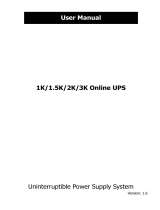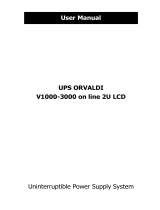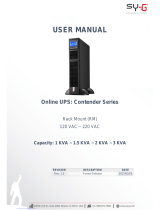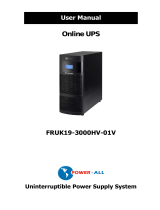
Table of Contents
Important Safety Warnings ..................................................................................................... 3
Transportation and Storage............................................................................................................................................. 3
Preparation ...................................................................................................................................................................... 3
Installation ....................................................................................................................................................................... 3
Operation ........................................................................................................................................................................ 4
Maintenance, Service and Faults ..................................................................................................................................... 4
Avertissements de sécurité importants .................................................................................... 5
Transport et stockage ...................................................................................................................................................... 5
Préparation ...................................................................................................................................................................... 5
Installation ....................................................................................................................................................................... 6
Fonctionnement .............................................................................................................................................................. 6
Maintenance, Service et Défauts .................................................................................................................................... 7
1. Installation and Setup .......................................................................................................... 9
Unpacking and Inspection ............................................................................................................................................... 9
Rear Panel ...................................................................................................................................................................... 10
Operating Principle ........................................................................................................................................................ 11
Installing the UPS ........................................................................................................................................................... 11
Setting Up the UPS ........................................................................................................................................................ 12
Battery Replacement ..................................................................................................................................................... 15
Replacement Battery Assembly ..................................................................................................................................... 15
2. Operations ......................................................................................................................... 18
Button Operations ......................................................................................................................................................... 18
LCD Panel ....................................................................................................................................................................... 19
Audible Alarms .............................................................................................................................................................. 20
LCD Panel Index ............................................................................................................................................................. 21
Operating Mode Descriptions ....................................................................................................................................... 22
UPS Settings ................................................................................................................................................................... 23
Fault Reference Codes ................................................................................................................................................... 29
Warning Indicators ........................................................................................................................................................ 30
3. Troubleshooting ................................................................................................................. 31
4. Maintenance and Storage ................................................................................................... 33
Maintenance ................................................................................................................................................................. 33
Storage .......................................................................................................................................................................... 33
5. Specifications ..................................................................................................................... 34
Input .............................................................................................................................................................................. 34
Output ........................................................................................................................................................................... 34
Efficiency ....................................................................................................................................................................... 34
Battery ........................................................................................................................................................................... 35
Physical .......................................................................................................................................................................... 35
Environment .................................................................................................................................................................. 35
Management ................................................................................................................................................................. 35
Expandable Battery Box Specification ........................................................................................................................... 36

























